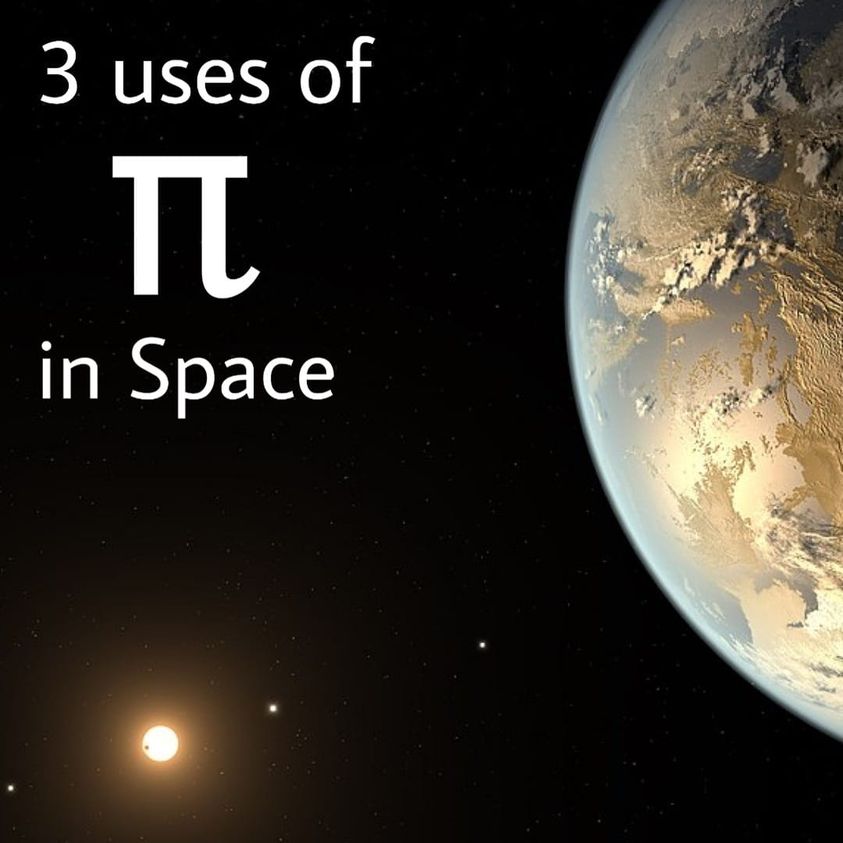Pi (π) has always been every nerd’s favourite number.
So what is pi? Simply put, it is the ratio of circumference by the diameter. No matter how big or small the circle is, from the size of a coin to the size of the planet, when you divide the circumference by its diameter, you will get pi.
Pi is not used in middle school textbooks only but in every field of Science. In fields like astronomy, physics, aeronautical engineering, and many more, pi makes frequent appearances.
Let’s see some important areas where pi has crucial existence.
- Finding size of Parachute for rover landing.
Landing on Mars is very hard. The spacecraft must slow down so as to perform soft landing ( to avoid hitting hard on surface and destructing into pieces).
To achieve that, we use a parachute. Sole purpose of parachute is to increase the area and thus increase air resistance. It basically produces drag.
Whenever you throw anything down, say paper or ball, air resistance opposes the motion and slow downs the speed of object.
Thus when the parachute opens, the speed of lander will reduce and finally touch down on surface softly.
Bigger the parachute, more air resistance it will experience. But how big the parachute should be for solft landing on Mars (considering the parameters of martian Atmosphere) ? Pi comes to pour help.
Radius of parachute needed;
R² = mass × gravitational acceleration / 2 π × drag coefficient × density of air × terminal velocity
We can find radius of parachute needed for soft landing by R² = mg / 2π Cd Vt
- Finding size and temperature of Exoplanets
Researchers use transit method to detect planets outside our solar system. When planet passes by from front of the host star, it blocks out some light and creates dip in the light curve. To interpret that curve, we need to know how big the host star is, which can be calculated by formula for the surface area of sphere i.e 4πr². Knowing the amount of light blocked we can calculate exoplanet’s size as well.
Also, we can know the temperature of Exoplanet, when we know how much time it takes to complete one round around the star.
By Kepler’s third law, R³ = GMT³ / 4π²
where R is the radius of the orbit of the planet. Farther the planet is from the star, cooler it is. That’s how we can estimate the planet’s temperature giving us hint about if it’s habitable.
Size and temperature of Exoplanet can be figured out by using formulas involving pi (π): 4πr² and R³ = GMT³ / 4π²
- Gravity, energy and mass
Pi day coincides with the birthday of Albert Einstein. Happy birthday Einstein!
The general theory of relativity describes that mass bends the spacetime. So how the shape of spacetime can be described? Einstein came up with an equation which formed relation between the shape of space time and distribution of mass and energy, given by G = 8π GT / c⁴ And here also, pi appears.
Mass bends the spacetime, and spacetime tells mass how to move: G = 8π GT / c⁴
See how ubiquitous pi is in our universe.
Thus pi isn’t just a fancy number, it is a very important constant helping us describe the universe.
Have you taken the pi challenge? It’s all about reciting digits of pi.
Pi = 3.141592653589793238462643383279502884197169399375105820974944592307816406286…
How far can you go? Sharma, Suresh Kumar made a world record by reciting 70030 digits of pi.
Stay Curious!
